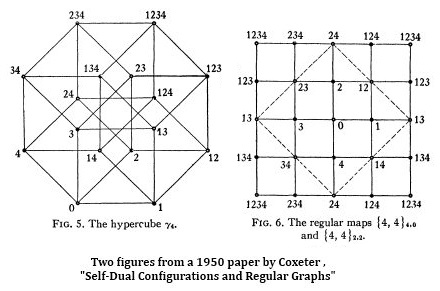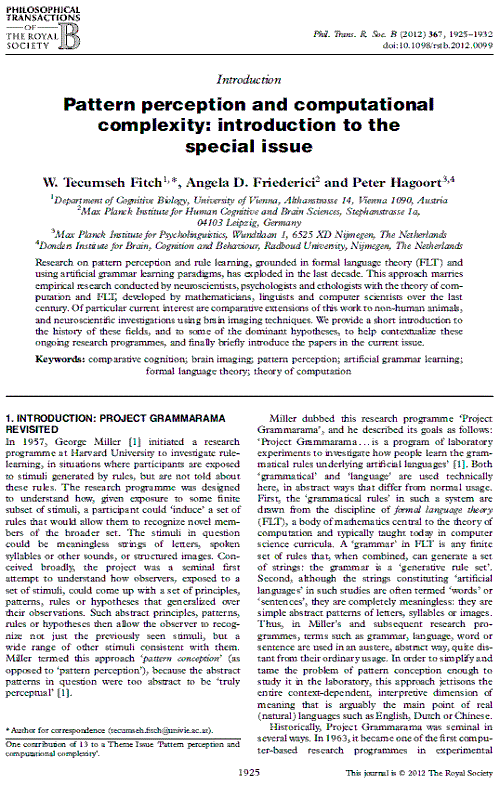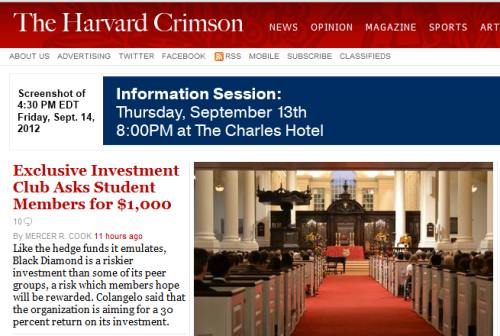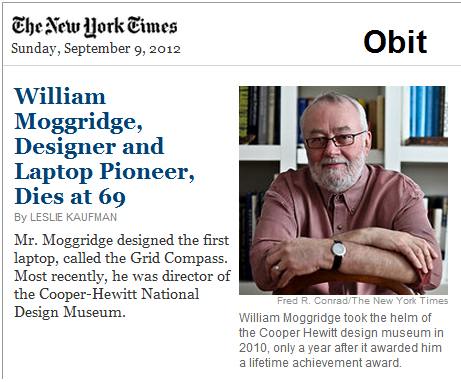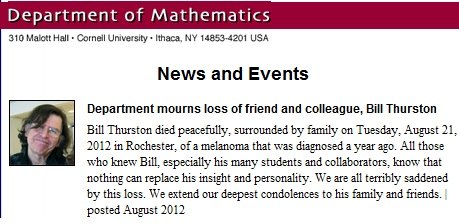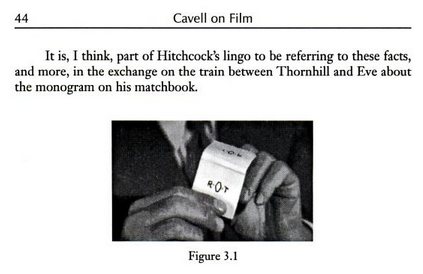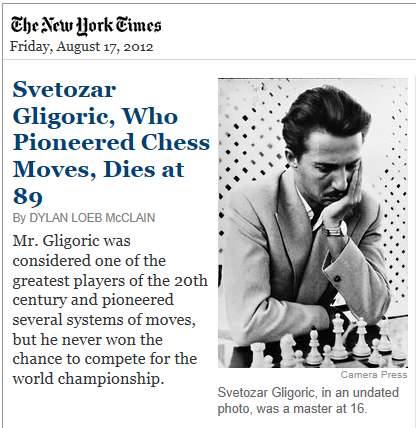Update of 11:22 AM ET— A job for Mitt—
Saturday, September 29, 2012
This Just In
B17
The New York Times on its print edition yesterday:
A version of this article appeared in print
on September 28, 2012, on page B17
of the New York edition with the headline:
John Silber Dies at 86; Led Boston University.
The Times 's Robert D. McFadden wrote that
Silber was "a philosopher by training but
a fighter by instinct."
That phrase was brought to mind today
by a Sept. 25 link in The Harvard Crimson
to Mumford & Sons singing "The Boxer"
in Providence on Transfiguration Day.
There was no Transfiguration Day post
in this journal. Here are parts of the posts
for the preceding and following days—
See also "The Count" from September 17.
Friday, September 28, 2012
Empty Chair at B.U.*
Below: A New York Times "Fashion Week: Immerse Yourself" ad
with obituary of former Boston University president John Silber—
"a philosopher by training but a fighter by instinct"—
"I can't do that to myself ." — Clint Eastwood
* See a Sept. 1st CNN piece by Boston University
religion scholar Stephen Prothero—
"Give Me Bali's Empty Chair over Eastwood's"—
See also Prothero in this journal.
Geometretos*
MEDEIS AGEOMETRETOS EISITO
— Inscription at entrance to
Plato's Academy, according to
an elementary introduction to
philosophy by James L. Christian
For Irving Adler, who reportedly
died on September 22, 2012—
|
|
Background: See Sangaku in this journal.
See also the following, from a different
elementary introduction, by Adler—
Giant Golden Book of Mathematics,
illustrated by Lowell Hess—
 .
.
(Detail of Flickr photo)
* See Liddell and Scott.
Thursday, September 27, 2012
Kummer and the Cube
Denote the d-dimensional hypercube by
"… after coloring the sixty-four vertices of
alternately red and blue, we can say that
the sixteen pairs of opposite red vertices represent
the sixteen nodes of Kummer's surface, while
the sixteen pairs of opposite blue vertices
represent the sixteen tropes."
— From "Kummer's 166 ," section 12 of Coxeter's 1950
"Self-dual Configurations and Regular Graphs"
Just as the 4×4 square represents the 4-dimensional
hypercube
so the 4x4x4 cube represents the 6-dimensional
hypercube
For religious interpretations, see
Nanavira Thera (Indian) and
I Ching geometry (Chinese).
See also two professors in The New York Times
discussing images of the sacred in an op-ed piece
dated Sept. 26 (Yom Kippur).
Mathematics and Narrative (continued)
In diamond-narrative news today…
"Among the low points of his career was his performance
in the disastrous 1985 remake of “King Solomon’s Mines….”
— David Belcher in today's online New York Times
A Kenning for Thor’s Day
"A kenning… is a circumlocution
used instead of an ordinary noun
in Old Norse, Old English and
later Icelandic poetry." — Wikipedia
Note the title of Tuesday's post High White in the Dark Fields.
Related material, in memory of a composer-lyricist
who died Monday (NY Times ) or Tuesday (LA Times )—
April 9, 1962
The "1961" Oscars ceremony shown above was for the films of 1961.
The ceremony itself was held on April 9, 1962.
For a different Tiffany, see Tuesday's Another Day.
Wednesday, September 26, 2012
Flow
|
From French cinema—
"a 'non-existent myth' of a battle between |
"Moon River, wider than a mile…"
|
The most damaging and obstructive Like “genius.” And “sincerity.” And “inspiration.” Distrust these words.
They stand for cherished myths,
— Verlyn Klinkenborg, |
"All she had to do was kick off and flow."
"I'se so silly to be flowing but I no canna stay."
Tuesday, September 25, 2012
High White in the Dark Fields
"High white noon"
— Phrase of Don DeLillo and Josefine Lyche
"Spellbinding visuals dwarf weak characters."
— Fox News review of Snow White and the Huntsman
For some stronger characters, see Limitless , a 2011 film
based on a 2001 novel by Alan Glynn, The Dark Fields .
See also St. Andrew's Day 2011 in this journal.
Another Day
Verlyn Klinkenborg in yesterday's online New York Times—
"Even metaphors — the best ones anyway —
are literal-minded. But that’s a story for another day."
Another day: May 18, 2010—
Part I: At Pomona College
"Writer-in-Residence Verlyn Klinkenborg '74
Writes Essay on Graduation for New York Times"
— Pomona College news item, May 18, 2010, by
Laura Tiffany
Part II: In this journal
Note that the geometric diamond in the screenshot above
is not blue but black.
See also Pomona College under the topic Defining Form
in this journal.
Signs
"And so the sentence ceases to be a sentence—
a verbal construct of a certain length, velocity and
rhythm with, at bottom, an unambiguous literal
meaning. It becomes a sign instead that telepathic
communication is about to commence."
— Verlyn Klinkenborg, "The Trouble With Intentions,"
in The New York Times last night at 9:30 PM ET
Other signs of the Times (click to enlarge)—
Signs suggested by Klinkenborg's remarks—
Click the above image for further details.
Monday, September 24, 2012
Midbrow in Paris
"Middlebrow culture was killed in the late 50's and 60's,
and the mortal blows came from opposite directions.
The intellectuals launched assaults on what they took to be
middlebrow institutions, attacks that are so vicious
they take your breath away….
At the same time, pop culture changed."
— David Brooks in The New York Times , June 16, 2005
"… but the fighter still remains" —Paul Simon
"James Joyce frequently presents climactic moments
of realization of life at the end of his stories; these
psychological revelations, called epiphanies, constitute
moments of heightened awareness which foment reflection
on the part of both the character and the readers, as well
as introduce an element of surprise."
— The Telling and the Tale , by Gilda Pacheco Acuña
and Kari Meyers Skredsvig, Editorial Universidad
de Costa Rica , 2006, page 11
For Scott and Ernest, from Julio —
"The novel wins by points and the short story by knockout."
Nice Job, Jimmy
"… and now thanks to Philo T. Farnsworth,
we have 'Here Comes Honey Boo Boo.'"
— Jimmy Kimmel at last night's Emmy Awards
Related material—
Aldous Huxley in last evening's Log24 post—
"Embraced, the lovers desperately try
to fuse their insulated ecstasies into
a single self-transcendence…."
From an anonymous author at the website Kill Devil Hill—
"This little story… has that climactic moment of
heightened awareness…. This is a moment where
two individuals become one, empowering them
to transcend the limitations of their own individual
frailty and society. It's an epiphany, an almost
divine spark. It is an experience when one plus one
don't equal two, but something far greater."
Kill Devil Hills also appears in a 1983 film—
"Suppose it were possible to transfer
from one mind to another
the experience of another person."
— Trailer for "Brainstorm" (1983),
the last film of Natalie Wood
Sunday, September 23, 2012
Point Counterpoint
"We live together, we act on, and react to, one another; but always and in all circumstances we are by ourselves. The martyrs go hand in hand into the arena; they are crucified alone. Embraced, the lovers desperately try to fuse their insulated ecstasies into a single self-transcendence; in vain. By its very nature every embodied spirit is doomed to suffer and enjoy in solitude. Sensations, feelings, insights, fancies – all these are private and, except through symbols and at second hand, incommunicable. We can pool information about experiences, but never the experiences themselves. From family to nation, every human group is a society of island universes. Most island universes are sufficiently like one another to permit of inferential understanding or even of mutual empathy or "feeling into." Thus, remembering our own bereavements and humiliations, we can condole with others in analogous circumstances, can put ourselves (always, of course, in a slightly Pickwickian sense) in their places. But in certain cases communication between universes is incomplete or even nonexistent. The mind is its own place, and the places inhabited by the insane and the exceptionally gifted are so different from the places where ordinary men and women live, that there is little or no common ground of memory to serve as a basis for understanding or fellow feeling. Words are uttered, but fail to enlighten. The things and events to which the symbols refer belong to mutually exclusive realms of experience."
"Greet guests with a touch of glass."
Plan 9 (continued)–
In Like Flynn
From the Wall Street Journal site Friday evening—
| ESSAY September 21, 2012, 9:10 p.m. ET
Are We Really Getting Smarter? Americans’ IQ scores have risen steadily over the past century.
|
No, thank you. I prefer the ninth configuration as is—

Why? See Josefine Lyche’s art installation “Grids, you say?“
Her reference there to “High White Noon” is perhaps
related to the use of that phrase in this journal.
The phrase is from a 2010 novel by Don DeLillo.
See “Point Omega,” as well as Lyche’s “Omega Point,”
in this journal.
The Wall Street Journal author above, James R. Flynn (born in 1934),
“is famous for his discovery of the Flynn effect, the continued
year-after-year increase of IQ scores in all parts of the world.”
—Wikipedia
His son Eugene Victor Flynn is a mathematician, co-author
of the following chapter on the Kummer surface— 
For use of the Kummer surface in Buddhist metaphysics, see last night’s
post “Occupy Space (continued)” and the letters of Nanavira Thera from the
late 1950s at nanavira.blogspot.com.
These letters, together with Lyche’s use of the phrase “high white noon,”
suggest a further quotation—
You know that it would be untrue
You know that I would be a liar
If I was to say to you
Girl, we couldn’t get much higher
See also the Kummer surface at the web page Configurations and Squares.
Saturday, September 22, 2012
Occupy Space
"The word 'space' has, as you suggest, a large number of different meanings."
— Nanavira Thera in [Early Letters. 136] 10.xii.1958
From that same letter (links added to relevant Wikipedia articles)—
|
Space (ākāsa) is undoubtedly used in the Suttas
Your second letter seems to suggest that the space |
A simpler metaphysical system along the same lines—
|
The theory, he had explained, was that the persona
— The Gameplayers of Zan , |
"I am glad you have discovered that the situation is comical:
ever since studying Kummer I have been, with some difficulty,
refraining from making that remark."
— Nanavira Thera, [Early Letters, 131] 17.vii.1958
Hook
Friday, September 21, 2012
Trouble with the Curve
The Harvard Crimson on last night's Ig Nobel Prize ceremony:
"The theme of the evening was 'The Universe,' a catchword
that had the audience cheering any time it was mentioned
throughout the night. Throughout the ceremony, a mini opera
entitled 'The Intelligent Designer and the Universe'* premiered
in four acts.
The opera’s final line was “This is how the Universe decays
into insanity.”
* An opera "about an insane wealthy man who bequeaths his
fortune to have someone design a beautiful dress for the
universe." —Mark Pratt, Associated Press
In related news…
"Most mysteries begin in confusion and end in certainty;
Pynchon likes to change this trajectory, so that what begins
a mystery ends as pure chaos. (Well aware how frustrating
some readers find this, Pynchon sets up a running gag in
Inherent Vice about a class action suit brought against MGM
by audiences who don't like the way its stories end.)"
— Sarah Churchwell in The Guardian , Sunday, July 26, 2009
History
Where Entertainment is God continues…
|
Excerpts from "Today in History," Today's Birthdays: Thought for Today: "The crisis of yesterday |
And the joke of yesterday?
Related material:
http://en.wikipedia.org/wiki/Al-Qiyama
Thursday, September 20, 2012
Immersion
Part of a New York Times banner ad last night—
(Fashion week dates 2012 —
New York Sept. 6-13, London Sept. 14-18,
Milan Sept. 19-25, Paris Sept. 25-Oct. 3.)
Some related prose suggested by a link in
last night's Log24 post—
The theory, he had explained, was that the persona
was a four-dimensional figure, a tessaract in space,
the elementals Fire, Earth, Air, and Water permutating
and pervolving upon themselves, making a cruciform
(in three-space projection) figure of equal lines and
ninety degree angles.
— The Gameplayers of Zan , a novel by M. A. Foster

See also, if you can find a copy, Jeff Riggenbach's
"Science Fiction as Will and Idea," Riverside Quarterly
Vol. 5, No. 3 (whole number 19, August 1972, ed. by
Leland Sapiro et al.), 168-177.
Some background—
Tuesday's Simple Skill and 4D Ambassador,
as well as Now What? from May 23, 2012.
Wednesday, September 19, 2012
Game
“The Game in the Ship cannot be approached as a job,
a vocation, a career, or a recreation. To the contrary,
it is Life and Death itself at work there. In the Inner Game,
we call the Game Dhum Welur , the Mind of God."
— The Gameplayers of Zan

"When Death tells a story,
you really have to listen."
— The Book Thief , cover
Art Wars (continued)
Today's previous post, "For Odin's Day," discussed
a mathematical object, the tesseract, from a strictly
narrative point of view.
In honor of George Balanchine, Odin might yield the
floor this evening to Apollo.
From a piece in today's online New York Times titled
"How a God Finds Art (the Abridged Version)"—
"… the newness at the heart of this story,
in which art is happening for the first time…."
Some related art—
and, more recently—
This more recent figure is from Ian Stewart's 1996 revision
of a 1941 classic, What Is Mathematics? , by Richard Courant
and Herbert Robbins.
Apollo might discuss with Socrates how the confused slave boy
of Plato's Meno would react to Stewart's remark that
"The number of copies required to double an
object's size depends on its dimension."
Apollo might also note an application of Socrates' Meno diagram
to the tesseract of this afternoon's Odin post—
For Odin’s Day*
(Mathematics and Narrative, continued)
| "My dad has a great expression," Steve Sabol told USA TODAY Sports last year. "He always says, 'Tell me a fact, and I'll learn. Tell me the truth, and I believe. But tell me a story, and it will live in my heart forever.' " |
Fact—
Truth—
An art gallery in Oslo is exhibiting a tesseract.
Story—
The Jewel of Odin's Treasure Room
* I.e., Wednesday. For some apt Nordic spirit,
see Odin's Day 2012 Trailer.
Tuesday, September 18, 2012
Simple Skill
But with good Will
To show our simple skill…
( Continued from Midsummer Eve, 1993 )
The "Black Diamond" search from Holy Cross Day
leads to Talk Amongst Yourselves, which in turn
leads to PyrE in the Book, with Alfred Bester's
version of "Will and Idea."
This phrase may be regarded as a version of
Schopenhauer's "Will and Representation."
Related material—
"Schopenhauer's notion of the will comes from the Kantian thing-in-itself, which Kant believed to be the fundamental reality behind the representation that provided the matter of perception, but lacked form. Kant believed that space, time, causation, and many other similar phenomena belonged properly to the form imposed on the world by the human mind in order to create the representation, and these factors were absent from the thing-in-itself. Schopenhauer pointed out that anything outside of time and space could not be differentiated, so the thing-in-itself must be one and all things that exist, including human beings, must be part of this fundamental unity. Our inner-experience must be a manifestation of the noumenal realm and the will is the inner kernel* of every being. All knowledge gained of objects is seen as self-referential, as we recognize the same will in other things as is inside us." —Wikipedia
* "Die Schrecken des Todes beruhen großentheils auf dem falschen Schein, daß jetzt das Ich verschwinde, und die Welt bleibe, Vielmehr aber ist das Gegentheil wahr: die Welt verschwindet; hingegen der innerste Kern des Ich, der Träger und Hervorbringer jenes Subjekts, in dessen Vorstellung allein die Welt ihr Daseyn hatte, beharrt."
— Schopenhauer, Die Welt als Wille und Vorstellung , Kapitel 41
Added Nov. 16, 2012, a translation by E. F. J. Payne—
"The terrors of death rest for the most part on the false illusion that then the I or ego vanishes, and the world remains. But rather is the opposite true, namely that the world vanishes; on the other hand, the innermost kernel of the ego endures, the bearer and producer of that subject in whose representation alone the world had its existence."
— THE WORLD AS WILL AND REPRESENTATION
by Arthur Schopenhauer
Translated from the German by E. F. J. Payne
In two volumes
© 1969 Dover Publications, Inc.
© 1958 by The Falcon's Wing Press
Volume Two: Supplements to the Fourth Book,
XLI. On Death and Its Relation to the Indestructibility of Our Inner Nature
Monday, September 17, 2012
The Count
|
… I saw a shadow
I rose to a knee, |
Simpson reportedly died on Holy Cross Day.
That day in this journal—
Pattern Conception
( Continued from yesterday's post FLT )
Context Part I —
"In 1957, George Miller initiated a research programme at Harvard University to investigate rule-learning, in situations where participants are exposed to stimuli generated by rules, but are not told about those rules. The research program was designed to understand how, given exposure to some finite subset of stimuli, a participant could 'induce' a set of rules that would allow them to recognize novel members of the broader set. The stimuli in question could be meaningless strings of letters, spoken syllables or other sounds, or structured images. Conceived broadly, the project was a seminal first attempt to understand how observers, exposed to a set of stimuli, could come up with a set of principles, patterns, rules or hypotheses that generalized over their observations. Such abstract principles, patterns, rules or hypotheses then allow the observer to recognize not just the previously seen stimuli, but a wide range of other stimuli consistent with them. Miller termed this approach 'pattern conception ' (as opposed to 'pattern perception'), because the abstract patterns in question were too abstract to be 'truly perceptual.'….
…. the 'grammatical rules' in such a system are drawn from the discipline of formal language theory (FLT)…."
— W. Tecumseh Fitch, Angela D. Friederici, and Peter Hagoort, "Pattern Perception and Computational Complexity: Introduction to the Special Issue," Phil. Trans. R. Soc. B (2012) 367, 1925-1932
Context Part II —
Context Part III —
A four-color theorem describes the mathematics of
general structures, not just symbol-strings, formed from
four kinds of things— for instance, from the four elements
of the finite Galois field GF(4), or the four bases of DNA.
Context Part IV —
A quotation from William P. Thurston, a mathematician
who died on Aug. 21, 2012—
"It may sound almost circular to say that
what mathematicians are accomplishing
is to advance human understanding of mathematics.
I will not try to resolve this
by discussing what mathematics is,
because it would take us far afield.
Mathematicians generally feel that they know
what mathematics is, but find it difficult
to give a good direct definition.
It is interesting to try. For me,
'the theory of formal patterns'
has come the closest, but to discuss this
would be a whole essay in itself."
Related material from a literate source—
"So we moved, and they, in a formal pattern"
Formal Patterns—
Not formal language theory but rather
finite projective geometry provides a graphic grammar
of abstract design—
See also, elsewhere in this journal,
Crimson Easter Egg and Formal Pattern.
Sunday, September 16, 2012
FLT
The "FLT" of the above title is not Fermat's Last Theorem,
but Formal Language Theory (see image below).
In memory of George A. Miller, Harvard cognitive psychologist, who
reportedly died at 92 on July 22, 2012, the first page of a tribute
published shortly before his death—
The complete introduction is available online. It ends by saying—
"In conclusion, the research discussed in this issue
breathes new life into a set of issues that were raised,
but never resolved, by Miller 60 years ago…."
Related material: Symmetry and Hierarchy (a post of 9/11), and
Notes on Groups and Geometry, 1978-1986 .
Sermon
"I'm 18."
— Spoken by a very beautiful girl
in the summer of 1991
"Work on what has been spoiled [ Decay ]."
Click image for some background.
Master Class
Wikipedia (links added)—
"Hubbard coined Dianetics from the Greek stems dia ,
meaning through, and nous , meaning mind."
"The snow kept falling on the world,
big white flakes like white gloves."
— Frederick Seidel, "House Master,"
poem in The New Yorker of Sept. 3, 2012
Detail of Aug. 30 illustration, with added arrow—

The part of the illustration at upper right is from a post of
Friday, July 13th, 2012, on the death of producer Richard Zanuck.
"Pay no attention to the shadow behind the curtain."
9/16
Today's date suggests a review of
Incommensurables, a post of July 18, 2012.
Saturday, September 15, 2012
Jeremiad
Click for further details.
Some context—
- Backstory,
- Holy Cross Day, 2012, and
- Feast of the Transfiguration, 2004.
Friday, September 14, 2012
Plan 9
(Continued… A Meditation for Holy Cross Day )
Black Diamond in this journal
versus
Black Diamond at Harvard—
Please Mister Please
Quotations for a Memorial
"There is a body on the cross in my church."
"Please Mister please, don't play B-17."
Thursday, September 13, 2012
Backstory
Yesterday's online Los Angeles Times
on a film that inspired recent protests in Cairo—
The film… was shown on June 23
to an audience of less than 10
at a theater on Hollywood Boulevard,
a source familiar with the screening said….
The screening was at The Vine Theater,
which rents itself out for private screenings,
said one person involved in the theater.
An image from this journal on that same day, June 23—

Source: Rudolf Koch, The Book of Signs
For some background on the symbol, see Damnation Morning.
See also Don Henley's Hollywood hymn "Garden of Allah."
Update of 8 PM Sept. 13, 2012—
Other sources give the film's screening date not as June 23,
2012, but rather as June 30, 2012. (BBC News, LAWEEKLY blogs)
The following post from this journal on that date may or
may not have some religious relevance.
| Saturday, June 30, 2012
Filed under: Uncategorized — m759 @ 7:20 PM "… to snare the spirits of mankind in nets of magic" — The aim of the artist, according to Thomas Wolfe Related entertainment— High-minded— Many Dimensions . Not so high-minded— The Cosmic Cube . |
Wednesday, September 12, 2012
Where Madness Lies
Tuesday, September 11, 2012
Symmetry and Hierarchy
A followup to Intelligence Test (April 2, 2012).
Philosophical Transactions of the Royal Society
B (2012) 367, 2007–2022
(theme issue of July 19, 2012) —
Juan Carlos Gómez [3], and W. Tecumseh Fitch [1]
Althanstrasse 14, 1090 Vienna, Austria
Medical University of Vienna and University of Vienna,
Veterinärplatz 1, 1210 Vienna, Austria
South Street, St Andrews, KY16 9JP, UK

the human mind."
Symmetries of Culture:
Theory and Practice of Plane Pattern Analysis.
Seattle, WA: University of Washington Press.
For culture , see T. S. Eliot and Russell Kirk on Eliot.
Monday, September 10, 2012
O for Origin

Stanley Cavell on the film North by Northwest—
"The 'nothing,' or naught, in the ROT monogram equally appropriately stands for origin, so its simultaneous meaning is that the actor is the origin of the character and also the origin of what becomes of himself or herself on film. The further thought that the human self as such is both an origin and a nothing is a bit of Cartesianism that is conceivably not called for in the context of this film."
— Cavell on Film , SUNY Press, 2005, pp. 44-45
For another central O, see Four Gods in this journal.
The film's mistaken-identity plot involves a fictional character named Kaplan. For a real Kaplan, see a 2001 New Yorker piece.
For a related catchphrase, see Kaplan Boo.
Sunday, September 9, 2012
Grid Compass
Related material: The Empty Chair Award.
For a different sort of grid compass, see February 3, 2011.
Decomposition Sermon
(Continued from Walpurgisnacht 2012)
Wikipedia article on functional decomposition—
"Outside of purely mathematical considerations,
perhaps the greatest value of functional decomposition
is the insight it provides into the structure of the world."
Certainly this is true for the sort of decomposition
known as harmonic analysis .
It is not, however, true of my own decomposition theorem,
which deals only with structures made up of at most four
different sorts of elementary parts.
But my own approach has at least some poetic value.
See the four elements of the Greeks in (for instance)
Eliot's Four Quartets and in Auden's For the Time Being .
Saturday, September 8, 2012
Meritocracy
"… the modern meritocracy dates only to the 1930s,
when Harvard President James Bryant Conant
directed his admissions staff to find a measure of
ability to supplement the old boys’ network. They
settled on the exam we know as the SAT."
— "Tyranny of Merit," by Samuel Goldman,
a book review dated August 21, 2012
SAT
The producer of the films "Gandhi," "City of Joy,"
and "The Legend of Bagger Vance"
reportedly died on Thursday, Sept. 6, 2012.
Film producer Jake Eberts is shown
on the set of "City of Joy" in 1991.
(David Appleby photo, Los Angeles Times ,
with the Sanskrit word SAT added)
Thursday, September 6, 2012
Decomp Revisited
Frogs:
"Some mathematicians are birds, others are frogs. Birds fly high in the air and survey broad vistas of mathematics out to the far horizon. They delight in concepts that unify our thinking and bring together diverse problems from different parts of the landscape. Frogs live in the mud below and see only the flowers that grow nearby. They delight in the details of particular objects, and they solve problems one at a time."
— Freeman Dyson (See July 22, 2011)
A Rhetorical Question:
"The past decade has been an exciting one in the world of mathematics and a fabulous one (in the literal sense) for mathematicians, who saw themselves transformed from the frogs of fairy tales— regarded with a who-would-want-to-kiss-that aversion, when they were noticed at all— into fascinating royalty, portrayed on stage and screen….
Who bestowed the magic kiss on the mathematical frog?"
Above: Amy Adams in "Sunshine Cleaning"
Related material:
- "Decomposition" in this journal
- "What is Truth (continued)," May 1, 2012
- The Boolean satisfiability problem (SAT)
- Remarks on SAT by Stanislav Busygin
- A related remark on complexity by Busygin
- Hashtag #sexyface and the Empty Chair
Glory Road (continued)
"In ancient Greece, 9 was the number of the Muses,
patron goddesses of the arts. They were the daughters
of Mnemosyne ('memory'), the source
of imagination, which in turn is the carrier of archetypal,
elementary ideas to artistic realization in the field
of space-time. The number 9, that is to say, relates
traditionally to the Great Goddess of Many Names
(Devi, Inanna, Ishtar, Astarte, Artemis, Venus, etc.),
as matrix of the cosmic process, whether in the
macrocosm or in a microcosmic field of manifestation."
— Joseph Campbell in The Inner Reaches of Outer Space ,
first published in 1986
|
From Robert A. Heinlein’s Glory Road (1963): Her face turned thoughtful. “Would you like to call me ‘Ettarre’?” “Is that one of your names?” “It is much like one of them, allowing for different spelling and accent. Or it could be ‘Esther’ just as closely. Or ‘Aster.’ Or even ‘Estrellita.’ “ ” ‘Aster,’ ” I repeated. “Star. Lucky Star!” |
Wednesday, September 5, 2012
Plan 9
(Continued from Up to Date, Aug. 28.)
Voyager 1 Story
By Amy Hubbard in the Los Angeles Times
September 4, 2012, 3:11 p.m. [PDT]
How long does it take to fly to the edge of
the solar system? At least 35 years.
Voyager 1 is there now….
Related material—
Dinga dong ding.
Tuesday, September 4, 2012
But seriously…
This post is continued from May 12, 2011.
See also another journal's post on that date
as well as some related posts here.
Up for Grabs
Monday, September 3, 2012
High Anxiety
IDEAS OF REFERENCE Department
New York Times online front page, 11 PM EDT today—
NOTE:
The above Times teaser on
"my obsessive-compulsive brain"
does not refer to the initials "O.C.D."
in this morning's Log24 post "Hashtag E."
The source of those initials was not
"Obsessive-Compulsive Disorder," but
rather the phrase "Our Class, Dear"
in a Sept. 3, 2012, New Yorker poem —

See also an August 30 post for Amy Adams.
Strategy
Some background:
The "big lie" strategy was originally described
by the National Socialists not as their own,
but as the strategy of their enemies .
Sunday, September 2, 2012
The Word in the Desert
For Trotsky's Birthday (Old Style), 2009—

Related material:
(Click for further details.)
See also St. Stephen's Day, 2011.
Saturday, September 1, 2012
College of the Desert
(Continued from 6:08 AM EDT yesterday and the day before)
"Richard Elster was seventy-three, I was less than half his age. He’d invited me to join him here, old house, under-furnished, somewhere south of nowhere in the Sonoran Desert or maybe it was the Mojave Desert or another desert altogether.* Not a long visit, he’d said."
— Don DeLillo, Point Omega
Maybe it was the desert near Twentynine Palms.
"Sometimes a wind comes before the rain
and sends birds sailing past the window,
spirit birds that ride the night,
stranger than dreams."
— Ending of Point Omega
* Update of Sept. 2, 2012— A different passage yields a more precise location.
Friday, August 31, 2012
Translation
"Translation in the direction
conceptual -> concrete and symbolic
is much easier than
translation in the reverse direction…."
— The late William P. Thurston
(See also "Atlas to the Text," Harvard Crimson , March 8, 2011).
Related cinematic imagery
Conceptual (thanks to Don DeLillo and The New York Times )—
Concrete and symbolic (thanks to Amy Adams and Emily Blunt, as well as
Frederick Seidel in the September 3, 2012, New Yorker )—
"Biddies still cleaned the student rooms."
Thursday, August 30, 2012
The Cruelest Month
Last night's 10 PM post linked to an April 7, 2012,
post that through a series of further links leads
to Columbia Film Theory .
For other film-related remarks, by a
Columbia alumnus,* see last night's post.
See also the 1.3 MB image from Aug. 16, the night
of Elvis's Wrap Party. An excerpt from that image
stars Amy Adams—

For Amy, from the current New Yorker—
The Master—

* N.O.C.D.
Wednesday, August 29, 2012
It’s 10 PM…
Do you know where your children are?
Continued from Plan 9 , a Log24 post of 9 PM Monday—
See another weblog's April 7, 2012, post on
God and Horror Movies.
See also this weblog's post on that date.
Hexagram 18
(Continued from June 14, 2007)
The late William P. Thurston on how mathematical knowledge may decay:
"There are several obvious mechanisms of decay. The experts in a subject retire and die, or simply move on to other subjects and forget. Mathematics is commonly explained and recorded in symbolic and concrete forms that are easy to communicate, rather than in conceptual forms that are easy to understand once communicated. Translation in the direction
In short, mathematics only exists in a living community of mathematicians that spreads understanding and breaths [sic ] life into ideas both old and new. The real satisfaction from mathematics is in learning from others and sharing with others. All of us have clear understanding of a few things and murky concepts of many more. There is no way to run out of ideas in need of clarification. The question of who is the first person to ever set foot on some square meter of land is really secondary. Revolutionary change does matter, but revolutions are few, and they are not
— At mathoverflow.net, October 30, 2010.
The discussion has been "closed as no longer relevant."
For another Thurston quote of interest, see a more recent
mathoverflow discussion "closed as not a real question."
Tuesday, August 28, 2012
Dark and Stormy
It was a dark and stormy night.
— A Wrinkle in Time (brought up to date)
Up to Date
"Plato's cave was brought up to date in 1978…."
— Keith Devlin in Mathematics: The Science of Patterns
Related material from yesterday: Touchy-Feely and Plan 9.
"Plan 9 deals with the resurrection of the dead."
For a rather different approach to Plato, see three posts of August 16, 2012—
Hope and Pope
Hope of Heaven , by John O'Hara—
Avon paperback edition, 1947
Heaven from all creatures hides the book of Fate, All but the page prescribed, their present state: From brutes what men, from men what spirits know: Or who could suffer being here below? The lamb thy riot dooms to bleed to-day, Had he thy reason, would he skip and play? Pleased to the last, he crops the flowery food, And licks the hand just raised to shed his blood. Oh, blindness to the future! kindly given, That each may fill the circle, marked by Heaven: Who sees with equal eye, as God of all, A hero perish, or a sparrow fall, Atoms or systems into ruin hurled, And now a bubble burst, and now a world. Hope humbly, then; with trembling pinions soar; Wait the great teacher Death; and God adore. What future bliss, He gives not thee to know, But gives that hope to be thy blessing now. Hope springs eternal in the human breast: Man never is, but always to be blest: The soul, uneasy and confined from home, Rests and expatiates in a life to come.
— Alexander Pope in An Essay on Man
Monday, August 27, 2012
Touchy-Feely
A remark by the late William P. Thurston—
Please note: I'm not advocating that
we turn mathematics into a touchy-feely subject.
Noted. But see this passage—
|
The Mathematical Experience , by Philip J. Davis and Reuben Hersh (1981), updated study edition, Springer, 2011— From the section titled "Four-Dimensional Intuition," pages 445-446: "At Brown University Thomas Banchoff, a mathematician, and Charles Strauss, a computer scientist, have made computer-generated motion pictures of a hypercube…. … at the Brown University Computing Center, Strauss gave me a demonstration of the interactive graphic system which made it possible to produce such a film…. … Strauss showed me how all these controls could be used to get various views of three-dimensional projections of a hypercube. I watched, and tried my best to grasp what I was looking at. Then he stood up, and offered me the chair at the control. I tried turning the hypercube around, moving it away, bringing it up close, turning it around another way. Suddenly I could feel it!. The hypercube had leaped into palpable reality, as I learned how to manipulate it, feeling in my fingertips the power to change what I saw and change it back again. The active control at the computer console created a union of kinesthetics and visual thinking which brought the hypercube up to the level of intuitive understanding." |
Thanks to the Web, a version of this experience created by Harry J. Smith
has been available to non-academics for some time.

Saturday, August 25, 2012
Illogical Songs*
Image from the New York Times Book Review of August 26.
See also a related song for Marxists who like Brecht.
For some lighter entertainment, see a 1942 movie trailer.
* A sequel to today's noon post Logical Song (itself suggested
by a Chautauqua, NY, end-of season event)
Logical Song
" Und ein Schiff mit acht Segeln…"
For the Feast of Saint Louis—
— Eliot, The Waste Land , from
Wagner, Tristan und Isolde
Für Seeräuber Jenny
See…
- Tonight's New York Times obituaries —
with an ad for a Terracotta Warriors exhibit - "Turn the page" in this journal
- "A Page is a Door," by Remy Charlip
- Wendy Derleth in "Wishmaster."
Des Todes*
For a racecar driver who reportedly died in
Orange, California, on August 12—
"Never one to take it slow, Grant was also an avid boater,
motorcyclist and aerobatic pilot. He last rode his motorcycle,
a BMW R1200R, on July 12."
"I love those Bavarians… so meticulous."
"The 'Valley of Death' is the oldest
concentration camp memorial in Bavaria."
* German for "Of Death."
For a different Todes, see an obituary of a poet.
See also Rosetta Jacobs in this journal.
Friday, August 24, 2012
Midnight in Geneva
Six PM EDT is midnight CEST in Geneva.
For the late Marvin W. Meyer, professor at Chapman
University in Orange, California, and a graduate
of Calvin College in Grand Rapids, Michigan…
(Some background: Marilynne Robinson.)
Formal Pattern
(Continued from In Memoriam (Aug. 22), Chapman's Homer (Aug. 23),
and this morning's Colorful Tale)
An informative, but undated, critique of the late Marvin W. Meyer
by April D. DeConick at the website of the Society of Biblical Literature
appeared in more popular form in an earlier New York Times
op-ed piece, "Gospel Truth," dated Dec. 1, 2007.
A check, in accord with Jungian synchronicity, of this journal
on that date yields a quotation from Plato's Phaedrus —
"The soul or animate being has the care of the inanimate."
Related verses from T. S. Eliot's Four Quartets —
"The detail of the pattern is movement."
"So we moved, and they, in a formal pattern."
Some background from pure mathematics (what the late
William P. Thurston called "the theory of formal patterns")—
A Colorful Tale
(Continued from July 19, 2008)
From the Diamond 16 Puzzle —
The resemblance between the "quadrants" part of
the above picture and the new Microsoft symbol—
— is of course purely coincidental, as is the fact
that the new symbol illustrates four colors.
Thursday, August 23, 2012
Chapman’s Homer
Louis Sahagun in today's Los Angeles Times—
The late Professor Marvin W. Meyer
"was our Indiana Jones," said James L. Doti,
president of Chapman University in Orange,
where Meyer held the Griset Chair in Bible
and Christian Studies and was director of
the Albert Schweitzer Institute.
Meyer reportedly died on August 16.
Thursday, August 16, 2012
|
Midnight Again
See tonight's leading obituaries
from The New York Times .
Wednesday, August 22, 2012
In Memoriam
A quotation from William P. Thurston,
who died yesterday—
"It may sound almost circular to say that
what mathematicians are accomplishing
is to advance human understanding of mathematics.
I will not try to resolve this
by discussing what mathematics is,
because it would take us far afield.
Mathematicians generally feel that they know
what mathematics is, but find it difficult
to give a good direct definition.
It is interesting to try. For me,
'the theory of formal patterns'
has come the closest, but to discuss this
would be a whole essay in itself."
Related material from a literate source—
"So we moved, and they, in a formal pattern"
— and from a different source, cached shortly after midnight
on the (GMT) date of Thurston's death —
(Click for Google Cache information and to enlarge.)
Detail from the above Math Overflow discussion—
Relativity Blues
(Continued from the day of Hunter S. Thompson's suicide)
See "The First Church of Marilynne Robinson."
(The New Yorker , May 30, 2012)
About the People
(Continued from March 28, 2001)
"Hillbillies, Okies, Arkies— they're all the same people."
— Hunter S. Thompson, Hell's Angels
Related cinematic art:
Hunger Games (2012)—
Winter’s Bone (2010)—
Midnight Special
Coltrane, not coal train.
See also a children's version.
Tuesday, August 21, 2012
Domino
Last night's 2:01 AM post suggests …
-
A review of a phrase from a 2003 post
on the late New York Times
music critic Harold C. Schonberg—
"Here’s a quarter, call someone who cares."
- Tom Waits in the 2005 Tony Scott film Domino—
-
A post from June 27, 2005—
the date of Domino Harvey's death.
Monday, August 20, 2012
Extended Metaphor
The Washington Post on yesterday's presidential Sunday—
"Accompanied by his wife, Michelle, and daughters
Sasha and Malia on the mild, overcast morning,
Obama walked through Lafayette Square
to St. John’s Episcopal Church.
The Rev. Michael Angell delivered a sermon
from John 6 about the extended metaphor
of eating Jesus’ flesh….
The Obamas, all wearing shades of blue,
participated in Holy Communion before
motorcading back to the White House."
In related news—
" We praised him and then we ate him,
all courtesy of a generous catering budget
from film director Tony Scott."
— "Death in the Center Ring:
Timothy Leary's High Dive,"
by Douglas Rushkoff, May 13, 2008
See also…
Sunday, August 19, 2012
O Marks the Spot
(Continued : See Identity, decomposition, and Sunshine Cleaning . )

"What, one might ask, does the suave, debonaire
Roger Thornhill have to do with the notion of
decomposition (emphasized by the unusual
coffin-shaped 'O') implied in the acronym
formed by his initials?"
— Paul Gordon, Dial "M" for Mother ,
Fairleigh Dickinson University Press, 2008, page 97
"To stay with the context of Cavell's brilliant reading
of the film's relation to Hamlet, 'there is something rot -ten
in North by Northwest ' that also needs to be explained."
— Paul Gordon, op. cit., page 98
Related remarks— Sunday morning, May 20, 2007.
Identity
On the middle initial of the Cary Grant character
in yesterday's post Summer Reading—
Click image for further details.
"The concept of nothingness follows Roger Thornhill throughout North by Northwest , first as another identity imposes itself upon him and later as circumstances force him to run from Vandamm as well as the police. When Eve asks him what the 'O' in 'ROT' stands for, Thornhill can only answer 'nothing.' His middle initial's lack of meaning connects well to the overall theme of the human self as possibly nothing." —Hitchcock and Identity, by Emily Pilgrim
Related material— Elementary Finite Geometry (Aug. 1).
See, too, a post for Holy Cross Day in 2002.
Saturday, August 18, 2012
Nightmare Alley
"History instructs. History also has
a very dark sense of humor.
Irish history, especially."
— John Kelly in The Daily Beast this morning
See also Joyce's Nightmare and
Nightmare Alley in this journal.
Summer Reading
On the author of a novel published August 14th,
"Where'd You Go, Bernadette"—
"Semple moved to the Pacific Northwest several years ago
seeking refuge from Los Angeles, but that doesn't mean
that the Emerald City gets a free pass from Semple's
sharp, satirical eye."
— Stewart Oksenhorn yesterday in The Aspen Times
See also a detail from Thursday's 1.3 MB image
"Search for the Lost Tesseract"—

Update of 9 PM EDT (6 PM LA time) the same day, Saturday, Aug. 18—
Centre
"Art indeed, so far from being
a playful diversion of the human race,
is the place of its most fundamental insight,
and the centre to which the more uncertain
steps of metaphysics must constantly return"
— Iris Murdoch, "On 'God' and 'Good,'" in
Existentialists and Mystics , Penguin Books,
1999, page 360
Related material —

Wendy Derleth
" 'In the West,' she observed, 'anything that must be hidden
is suspect; availability and honesty are interlinked. This clashes
irreconcilably with Islam… where the things that are
most precious, most perfect and most holy are always hidden….' "
— Pauls Toutonghi, review of a recent novel, Alif the Unseen
(page BR19, New York Times Sunday Book Review , August 12, 2012)
Friday, August 17, 2012
Hidden
Detail from last night's 1.3 MB image
"Search for the Lost Tesseract"—

The lost tesseract appears here on the cover of Wittgenstein's
Zettel and, hidden in the form of a 4×4 array, as a subarray
of the Miracle Octad Generator on the cover of Griess's
Twelve Sporadic Groups and in a figure illustrating
the geometry of logic.
Another figure—
Gligoric died in Belgrade, Serbia, on Tuesday, August 14.
From this journal on that date—
"Visual forms, he thought, were solutions to
specific problems that come from specific needs."
— Michael Kimmelman in The New York Times
obituary of E. H. Gombrich (November 7th, 2001)
Thursday, August 16, 2012
Raiders of the Lost Tesseract
(Continued from August 13. See also Coxeter Graveyard.)
Here the tombstone says
"GEOMETRY… 600 BC — 1900 AD… R.I.P."
In the geometry of Plato illustrated below,
"the figure of eight [square] feet" is not , at this point
in the dialogue, the diamond in Jowett's picture.
An 1892 figure by Jowett illustrating Plato's Meno—
Jowett's picture is nonetheless of interest for
its resemblance to a figure drawn some decades later
by the Toronto geometer H. S. M. Coxeter.
A similar 1950 figure by Coxeter illustrating a tesseract—
For a less scholarly, but equally confusing, view of the number 8,
see The Eight , a novel by Katherine Neville.
The Ninth Year
A passage from the Benjamin Jowett translation of Plato's Meno—
" 'For in the ninth year* Persephone sends the souls of those from whom she has received the penalty of ancient crime back again from beneath into the light of the sun above, and these are they who become noble kings and mighty men and great in wisdom and are called saintly heroes in after ages ⋄ .' The soul, then, as being immortal, and having been born again many times, and having seen all things that exist, whether in this world or in the world below, has knowledge of them all; and it is no wonder that she should be able to call to remembrance all that she ever knew about virtue, and about everything; for as all nature is akin, and the soul has learned all things; there is no difficulty in her eliciting or as men say learning, out of a single recollection all the rest, if a man is strenuous and does not faint; for all enquiry and all learning is but recollection."
* See this journal nine years ago, in August 2003.
⋄ Jowett's note— "Pindar, Frag. 98 (Boeckh)"
Wikipedia authors like Protious, an alleged resident of Egypt and
creator of The Socrates Swastika , may enjoy a less scholarly account:
From Babylon A. D. (a 2008 film)— Toorop with Egyptian Sacred Scarab tattoo—

— and Toorop with Aurora (who may be regarded as "the soul" in the Meno passage above)—

Toorop's neck tattoo in the second image above is from a fictional book
described in the writings of H. P. Lovecraft.
As swastika-like sacred symbols go, I prefer St. Bridget's Cross.
Semiotics
"Two clichés make us laugh, but
a hundred clichés move us
because we sense dimly that the clichés
are talking among themselves and
celebrating a reunion."
"'Casablanca': Cult Movies and Intertextual Collage,"
by Umberto Eco in SubStance , Vol. 14, No. 2, Issue 47:
In Search of Eco's Roses (1985), pp. 3-12.
(This paper was presented at a symposium,
"Semiotics of the Cinema: The State of the Art,"
in Toronto on June 18, 1984.)
Journal article published by U. of Wisconsin Press.
Stable URL: http://www.jstor.org/stable/3685047.
Click image for some related material.
Wednesday, August 15, 2012
Levity
"Here, Bochner plays with these elements with the philosophical levity that made Conceptual art (which art historians see Bochner as one of the kingpins) so refreshing, graceful, and funny, especially after a generation of painters made artmaking seem so serious, heavy, emotional." —ArtSlant.com
See also The Wikipedia Meno and Bochner in this journal.
Tuesday, August 14, 2012
Hacking 1984
"… theories about mathematics have had a big place in Western philosophy. All kinds of outlandish doctrines have tried to explain the nature of mathematical knowledge. Socrates set the ball rolling by using a proof in geometry to argue for the transmigration of souls. As reported by Plato in Meno , the boy who invents a proof of a theorem did not experiment on the physical world, but used only his mind in response to Socratic questions. Hence he must have had inborn knowledge of the proof and he must have got this knowledge in a previous incarnation.
Mathematics has never since been a subject for such philosophical levity."
See also this afternoon's post.
Space Odyssey
(An episode of Art Wars )
"Visual forms, he thought, were solutions to
specific problems that come from specific needs."
— Michael Kimmelman in The New York Times
obituary of E. H. Gombrich (November 7th, 2001)
"… deep cultural fears within the art world—
fears that art is elitist,
or some kind of confidence game,
or not a serious endeavor (a fear that has
dogged art since at least the time of Plato)."
— Philip Kennicott, quoted here on July 22, 2012
See also today's date in 2003.
Monday, August 13, 2012
Something Between
"I am a skeptic to whom the idea that a benign God
created us and watches over us is something between
a fairy story and a bad joke."
— The late art critic Robert Hughes in Things I Didn't Know*
A followup to this afternoon's previous Amy Adams post—
"Here was finality indeed, and cleavage!"
* Vintage paperback, December 2007, page 7
Raiders of the Lost Tesseract
(An episode of Mathematics and Narrative )
A report on the August 9th opening of Sondheim's Into the Woods—
Amy Adams… explained why she decided to take on the role of the Baker’s Wife.
“It’s the ‘Be careful what you wish’ part,” she said. “Since having a child, I’m really aware that we’re all under a social responsibility to understand the consequences of our actions.” —Amanda Gordon at businessweek.com
Related material—
Amy Adams in Sunshine Cleaning "quickly learns the rules and ropes of her unlikely new market. (For instance, there are products out there specially formulated for cleaning up a 'decomp.')" —David Savage at Cinema Retro
Compare and contrast…
1. The following item from Walpurgisnacht 2012—
2. The six partitions of a tesseract's 16 vertices
into four parallel faces in Diamond Theory in 1937—

Sunday, August 12, 2012
Doctor Who
On Robert A. Heinlein's novel Glory Road—
"Glory Road (1963) included the foldbox , a hyperdimensional packing case that was bigger inside than outside. It is unclear if Glory Road was influenced by the debut of the science fiction television series Doctor Who on the BBC that same year. In Doctor Who , the main character pilots a time machine called a TARDIS, which is built with technology which makes it 'dimensionally transcendental,' that is, bigger inside than out."
— Todd, Tesseract article at exampleproblems.com
From the same exampleproblems.com article—
"The connection pattern of the tesseract's vertices is the same as that of a 4×4 square array drawn on a torus; each cell (representing a vertex of the tesseract) is adjacent to exactly four other cells. See geometry of the 4×4 square."
For further details, see today's new page on vertex adjacency at finitegeometry.org.
Thursday, August 9, 2012
Just Once
In Dr. West's memory…
- Truly Tasteless Jokes Under the Volcano ,
- Just Once , and, from the day Dr. West died (July 24),
- The Devil in the Details .
Wednesday, August 8, 2012
Quadruple Bypass
"The first human to walk on the moon, Neil Armstrong,
is 'doing great' after undergoing cardiac bypass surgery,
his wife reported…..
… Armstrong… went to the hospital on Monday
for a stress test. He flunked, and on Tuesday,
surgeons bypassed four blockages in his
coronary arteries. His wife reports that his spirits
are high, and the doctors expect no problems
with his recovery…." — Alan Boyle, NBCNews.com
Over the life of Man
We watch and wait,
The Four who manage
His fallen estate:
We who are four were
Once but one,
Before his act of
Rebellion;
We were himself when
His will was free,
His error became our
Chance to be.
Powers of air and fire,
Water and earth,
Into our hands is given
Man from his birth….
— Auden, not Goethe
See also Tuesday morning's post.
Tuesday was Charlize Theron's birthday.
See June 9, 2012.
Tuesday, August 7, 2012
The Space of Horizons
"In the space of horizons that neither love nor hate"
— Wallace Stevens, "Things of August"
Seven years ago yesterday—
For some context, see Rosetta Stone as a Metaphor.
Related material from the University of Western Australia—

Projective plane of order 3
(The four points on the curve
at the right of the image are
the points on the line at infinity.)
Art critic Robert Hughes, who nearly died in Western
Australia in a 1999 car crash, actually met his death
yesterday at Calvary Hospital in the Bronx.
See also Hughes on "slow art" in this journal.
Sunday, August 5, 2012
Cube Partitions
The second Logos figure in the previous post
summarized affine group actions on partitions
that generate a group of about 1.3 trillion
permutations of a 4x4x4 cube (shown below)—
Click for further details.
Thursday, August 2, 2012
Logos
(Continued from December 26th, 2011)
Some material at math.stackexchange.com related to
yesterday evening's post on Elementary Finite Geometry—
Questions on this topic have recently been
discussed at Affine plane of order 4? and at
Turning affine planes into projective planes.
(For a better discussion of the affine plane of order 4,
see Affine Planes and Mutually Orthogonal Latin Squares
at the website of William Cherowitzo, professor at UC Denver.)
Wednesday, August 1, 2012
Triple Feature
For related material, see this morning's post Defining Form.
Elementary Finite Geometry
I. General finite geometry (without coordinates):
A finite affine plane of order n has n^2 points.
A finite projective plane of order n has n^2 + n + 1
points because it is formed from an order-n finite affine
plane by adding a line at infinity that contains n + 1 points.
Examples—
|
|
|
II. Galois finite geometry (with coordinates over a Galois field):
A finite projective Galois plane of order n has n^2 + n + 1
points because it is formed from a finite affine Galois 3-space
of order n with n^3 points by discarding the point (0,0,0) and
identifying the points whose coordinates are multiples of the
(n-1) nonzero scalars.
Note: The resulting Galois plane of order n has
(n^3-1)/(n-1)= (n^2 + n + 1) points because
(n^2 + n + 1)(n – 1) =
(n^3 + n^2 + n – n^2 – n – 1) = (n^3 – 1) .
III. Related art:
Another version of a 1994 picture that accompanied a New Yorker
article, "Atheists with Attitude," in the issue dated May 21, 2007:

The Four Gods of Borofsky correspond to the four axes of
symmetry of a square and to the four points on a line at infinity
in an order-3 projective plane as described in Part I above.
Those who prefer literature to mathematics may, if they like,
view the Borofsky work as depicting
"Blake's Four Zoas, which represent four aspects
of the Almighty God" —Wikipedia
Defining Form
Continued from July 29 in memory of filmmaker Chris Marker,
who reportedly* died on that date at 91 at his home in Paris.
See Slides and Chanting†and Where Madness Lies.
See also Sherrill Grace on Malcolm Lowry.
* Washington Post. Other sources say Marker died on July 30.
† These notably occur in Marker's masterpiece
La Jetée (review with spoilers).
Tuesday, July 31, 2012
Happy Birthday, J. K. Rowling
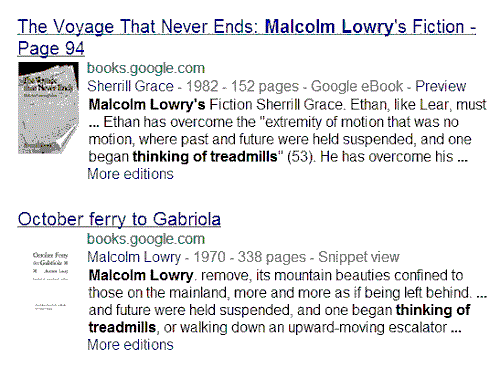
See also a July 19 death, this journal on that date, and
Down the Up Staircase.
Logo
than cipher: a mask rather than a revelation
in the romantic sense. Does love meet with love?
Do we receive but what we give? The answer is
surely a paradox, the paradox that there are
Platonic universals beyond, but that the glass
is too dark to see them. Is there a light beyond
the glass, or is it a mirror only to the self?
The Platonic cave is even darker than Plato
made it, for it introduces the echo, and so
leaves us back in the world of men, which does
not carry total meaning, is just a story of events."

Judy Davis in the Marabar Caves
The above image is from this journal on Sunday, April 13, 2008.
The preceding cover of a book by Northrop Frye was suggested
by material in this journal from February 2003.
See also Yankee Puzzle and Doodle Dandy.
Monday, July 30, 2012
Logos
Related material:
Frank J. Prial on the late singer Tony Martin—
— and, on Jan. 1, 2005, on beverage marketing:
Happy birthday to Hilary Swank.
Geometry and Death
A Necessary Truth—
James Singer, "A Theorem in Finite Projective Geometry
and Some Applications to Number Theory," Transactions
of the American Mathematical Society 43 (1938), 377-385.
A Contingent Truth—
Singer Tony Martin reportedly died Friday evening, July 27, 2012.
In his memory, some references to a "Singer 7-Cycle."
See also this journal 7 years prior to Martin's death.
Something to Read
Eric M. Friedlander, President of the
American Mathematical Society (AMS),
in the March 2011 AMS Notices —
"I think the best thing the AMS does by far is the Notices .
It could easily be in all doctors’ and dentists’ offices."
Notices : "Really?"
Friedlander: "It could be."
Related material from this journal:


— Annals of Art Education:
Geometry and Death
Unnecessary* Truth?
"There is no question about what arithmetic is for
or why it is supported. Society cannot proceed
without it. Addition, subtraction, multiplication,
division, percentages: though not all citizens can
deal fluently with all of them, we make the
assumption that they can when necessary.
Those who cannot are sometimes at a disadvantage.
Algebra, though, is another matter."
— Underwood Dudley in the Notices of the
American Mathematical Society, May 2010:
"What Is Mathematics For?"
A less nuanced remark from the American
Mathematical Society (AMS) today—
"The answer to the recent Op-Ed piece
in The New York Times entitled
'Is Algebra Necessary?'
is resoundingly YES!"
— Eric Friedlander, AMS president
* A review of philosophical terminology—
"The distinction between necessary truth
and contingent truth is a version of Leibniz 's
distinction between truths of reason and truths
of fact. A necessary truth must be true and
could not be false, whatever way the world is.
It is true in itself. A contingent truth, on the other
hand, depends upon the empirical world and might
have been false had the world been different."























